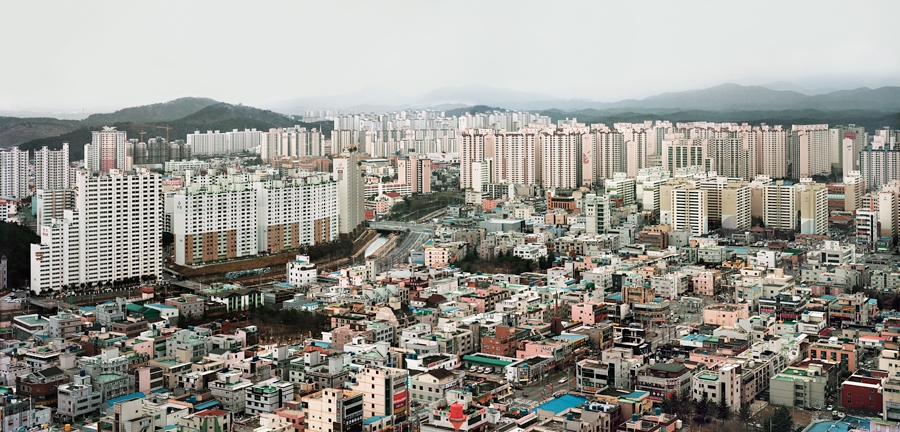Of the various acolytes of Bernd and Hilla Becher – Thomas Demand, Andreas Gursky and Thomas Ruff among them – Thomas Struth has developed the most nuanced and broad argument for large-scale photography as contemporary History Painting. His subject matter ranges from family groups to cityscapes, church interiors to crowded museum galleries; his work both probes culture and history writ large, and measures the present moment against the past. Recently, Struth has extended his investigations from the places of socioeconomic ritual and continuity to the means and mechanics of intellectual production by photographing facilities at the Kennedy Space Center in Florida and complex machinery at research centres like the Max Planck Institutes in Germany.
At Marian Goodman, similar images – pictures of Disneyland (the quintessence of realised fantasy) and of robotics labs – are combined with older photographs of architecture. The graffiti-defaced alley in Kovenskij Pereulok, St. Petersburg (2005) and the high-rise juggernaut of a new development I Korea, Ulsan 2, Lotte Hotel, Ulsan (2010), for example, offer a long view of human endeavour by way of Struth’s lens.
There are few grace notes: the doe-eyed rubber dinosaur before a theorem-covered whiteboard in Table 1, Georgia Tech, Atlanta, for example, and the saluting robot in a work titled Golem’s Playground, Georgia Tech, Atlanta (both 2013). Everything else, from the labs’ Sheetrock walls to the panoramas of Disneyland rendered in saturated colours that emphasise the cheapness of the spectacle, seems as relentlessly soulless as the phalanx of apartment blocks in Ulsan.
Titles like Golem’s Playground and scenes of the Magic Kingdom indicate that Struth’s subjects are artifice and artificiality, and beyond the means used to effect them, the complex desire to create and to amuse. To these he adds an ethical imperative: ‘Let us consider the vulnerability of the human body and soul under these circumstances,’ the artist writes in a statement accompanying the show. ‘It’s all creation; it’s made. It’s not a given.’ In Struth’s sober images, most devoid of people, this doesn’t add up to much. He seems to suggest that humanity, as represented by the tools and products of the intellect, lies in the divergence between aspiration and its realisation, or perhaps in the persistence of imagination and creativity, despite the mediocrity of its results.
Struth is often praised for what appears as a humble resignation to this ineluctable failure, for his sober-eyed embrace of the human condition, but there’s a current of Calvinist faith in predestination in his stance, and it lends the work a nasty bite. Moreover, this installation elides communal and urban spaces with personal workplaces; even Disneyland, for all its commercial mechanisms, began as the expression of one man’s vision.
While they might serve as examples of how the individual is translated into the public, these pictures also create equivalences that discount, if not judge, the fulfilment and pleasure the people who use these labs and machines might derive from their work. It’s troubling.
This article was first published in the April 2014 issue.
